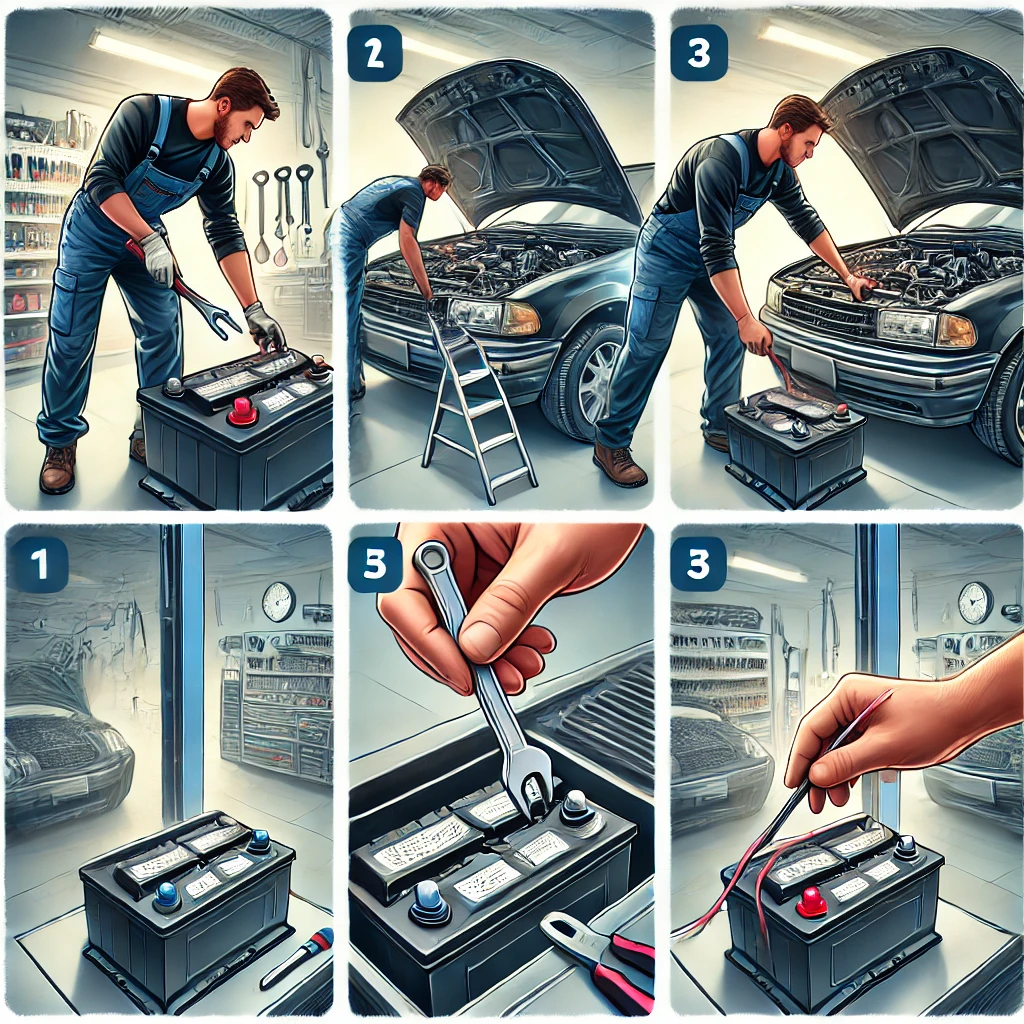Replacing a car battery is a task that anyone can learn with a bit of patience and preparation. Let’s break it down.
Essential Tools and Equipment
- Socket Wrenches: For loosening bolts.
- Battery Terminal Cleaner: To remove buildup and corrosion.
- Protective Gear: Gloves and goggles protect against acid splashes.
- Replacement Battery: Ensure it matches your car’s specifications.
Detailed Replacement Process
- Preparation:
- Park your car on a flat surface and turn off the ignition.
- Use the parking brake for added safety.
- Keep the new battery ready.
- Disconnecting the Old Battery:
- Locate the battery (refer to your car manual if necessary).
- Always disconnect the negative terminal (black) first to prevent electrical shorts.
- Remove the positive terminal (red) next.
- Removing the Old Battery:
- Unscrew the clamps or brackets holding the battery in place.
- Carefully lift the battery, avoiding any tilting that might cause acid spillage.
- Installing the New Battery:
- Place the new battery in the tray, ensuring it’s secure.
- Attach the positive terminal first and then the negative terminal.
- Tighten the clamps to keep the battery stable.
- Final Steps:
- Test the ignition to confirm successful installation.
- Properly dispose of the old battery at a recycling facility.
Common Mistakes to Avoid
- Reversing terminal connections can cause severe damage to your car’s electrical system.
- Failing to wear protective gear increases the risk of injury.

